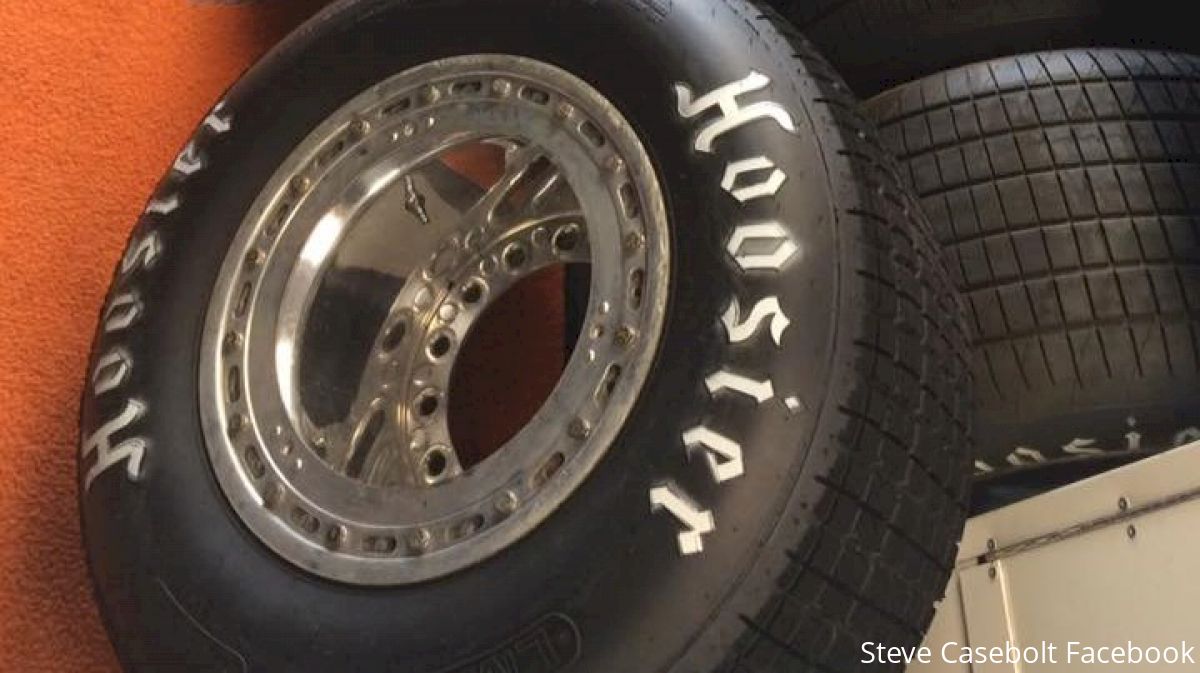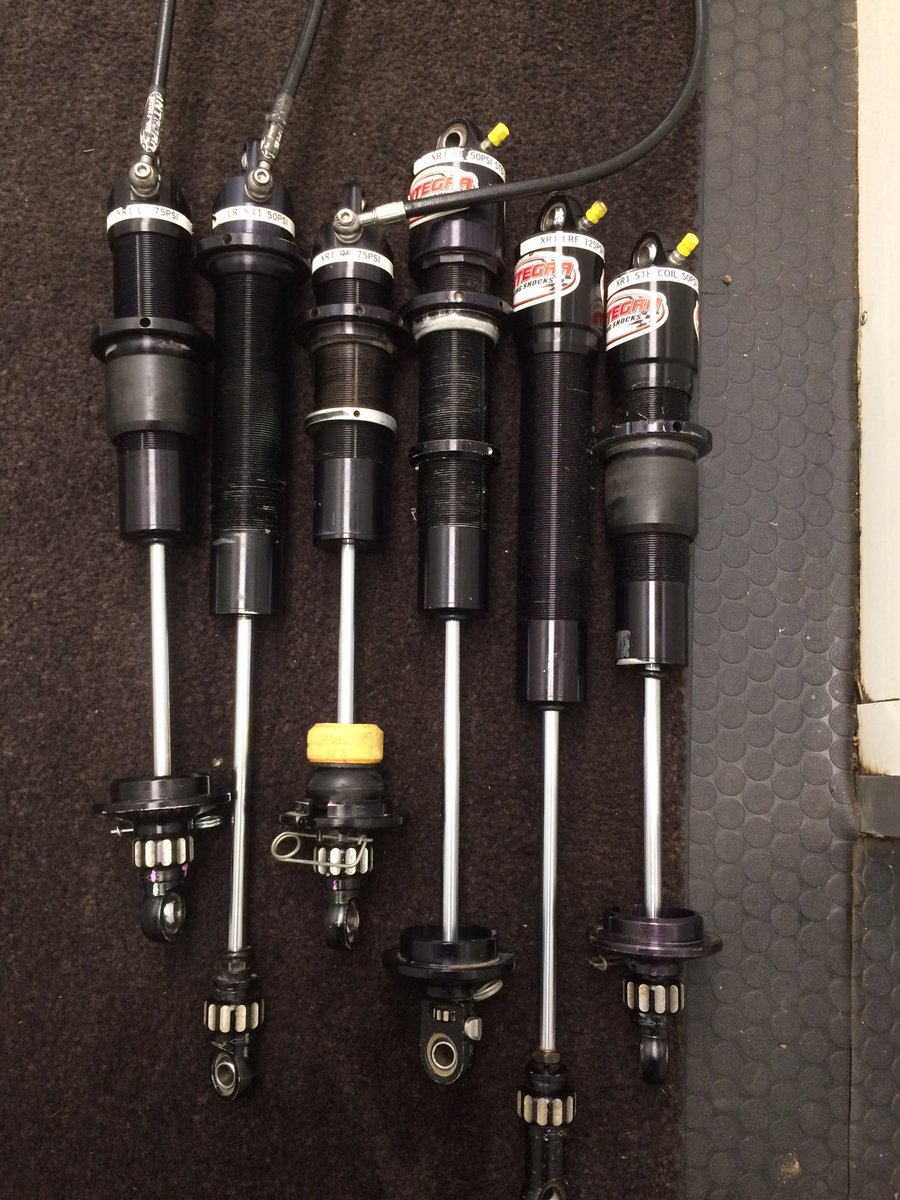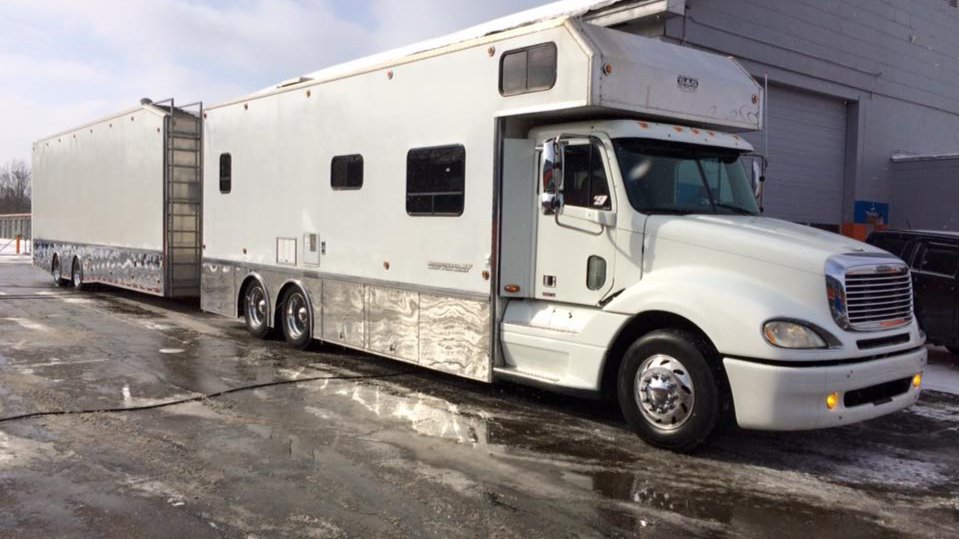All It Takes To Run A National Tour Is Guts, Talent, And A Half-Million
All It Takes To Run A National Tour Is Guts, Talent, And A Half-Million
Racing with a national touring series is an expensive proposition. This week, Jonathon Masters tells you just how much it is likely to cost.

By Jonathon Masters
Once again, we have reached the magic month of May in the motorsports world.
Almost every local track is up and running, national series purses are rising, and families are making their way to speedways across the country to celebrate the beginning of the racing summer grind.
It is also during this time that attrition begins to reap its toll.
Teams that committed to run full touring schedules begin to evaluate their plans for the remainder of the season, and a few will pull off the national series and regroup. They will abandon their original intentions of running coast to coast and choose to pick the races they go to more carefully or simply stay home and race locally.
Reasons a team may choose to fall off a national tour may vary, but most can account for this shift for two core reasons. The economic commitment of running a national series and the help required to do so can quickly stifle the dreams of chasing a national tour.
In part one, we will focus on the equipment costs.
Most people are aware that this is quite an undertaking, but not many fans or regional racers have ever seen the true costs associated with these national tours. We are going to pull back the curtain and give you a peak at what it takes to keep a national team going from February to November for both upstarts and established teams.
The first thing you will need to chase that season championship is cars. You're going to need at least two to pursue your national touring dreams because accidents will happen. Since you're not a superstar who runs a factory chasses, you're going to be paying out around $85,000 for two complete super late models with no motor included. Then add on $36,000 apiece for those aluminum motors; you will need three to get started. They are going to burn a lot of fuel during a 45-race schedule. So you need to make sure to budget for 26 drums of fuel for the season. At $600 a drum you will need $15,600 to keep the motors running.
These prices are an average of all manufactures and come from real national teams that have been running for decades. These prices can go up depending on where you are buying your racing component. This is a borderline price. Expect prices to go up from here rather than down.

Now of course you are going to need the tools and hardware to keep your car well maintained. That is going to run around $15,000 worth of jacks, power tools, pit carts, and associated items. Don't forget those spare parts you're going to need for those accidents we discussed. Bolt-on parts, fluids, drive line components, and suspension items such as extra shocks are going to run you around $20,000.
On a national tour you are going to be going to tracks of all shapes and sizes. You are going to need around 20 sets of Quick Change Gears to get the most speed out of your late model on a given night. The gears are going to take $2,500 out of your pocket this season. The final component you need for your car is 50 aluminum wheels for $10,000.
You finally have all the essentials needed to hit the track. The cars are ready. The spare parts are prepared, and the tires are stocked. Now it's time to tackle the real costs of running the series. The associated costs that go with running up and down the road all season.

It all starts with something to load up your car and crew and haul you around the nation. Purchase used since most teams these days go that route to contain costs. The entire rig will cost $250,000 and require around $25,000 in diesel fuel to keep it on the road. Just hope you don't have any mechanical setbacks on the truck and trailer that could add to your totals.
You will need to freshen your motors a few times over the season. The standard breakdown is $10-$12 a lap and needs to be done every 1,000 laps. In a regular 45-race season you are going to need about $35,000 worth of motor maintenance. This figure does not include any damage the motors might incur. Think of this as a dream season.
The dreaded tire bill for this 45-race tour schedule is going to be in the $25,000 range. This is with no help from tire manufactures. Most teams are not going to see any big tire savings from relationships with the tire companies. And the ones that do see savings have seen them go down the past five years. The price range is set at $25,000.
[tweet url="https://twitter.com/caseboltc9/status/824732163035820032" hide_media="0" hide_thread="1"]
The current totals for a ground-up team are in the $500,000-$550,000 range. It is a little better on the established teams that already have their trailers, some usable spare parts, tools, and other necessities. Even with all of those covered, the cost for these teams to add another driver is still going to be in the $200,000-$250,000 range.
The last thing to take into account is the people who are going on this journey with you who are going to keep you on track. These people are becoming rare, and the ones that are out there do not come cheap.
In part two, we'll go over the constant battle for good help and the consequences of going to the track with too little or unknowledgeable help.
-Jonathon Masters has a lifelong connection with dirt racing. His family has owned and operated MasterSbilt Race Cars manufacturing dirt late model chassis for 35 years. He attended college in North Carolina for motor sports management and has wrote for various industry publications. Jonathon was an account executive at The International Motorsports Industry Show, founder of the Heartland Auto Racing Show, and has been a racing industry professional for over a decade.
Engagement Is One Key To Dirt Racing's Success And NASCAR's Decline
The Changing Of NASCAR's Guard
Kasey Kahne's Future May Have Already Started
Ford Drivers Found Guilty Heading To Kansas
The Dillon Brothers' Grassroots Are Deep
Combined Dirt: Hafertepe Tumbles, Sheppard Advances, May 10
Combined Dirt: Sam Hafertepe Jr. Is Finally Perfect, May 3
Late Model: Mike Marlar Debuts In No. 4 Slot, May 17
Sprint Cars: Jason Johnson Surges With Top 5s, May 17

Once again, we have reached the magic month of May in the motorsports world.
Almost every local track is up and running, national series purses are rising, and families are making their way to speedways across the country to celebrate the beginning of the racing summer grind.
It is also during this time that attrition begins to reap its toll.
Teams that committed to run full touring schedules begin to evaluate their plans for the remainder of the season, and a few will pull off the national series and regroup. They will abandon their original intentions of running coast to coast and choose to pick the races they go to more carefully or simply stay home and race locally.
Reasons a team may choose to fall off a national tour may vary, but most can account for this shift for two core reasons. The economic commitment of running a national series and the help required to do so can quickly stifle the dreams of chasing a national tour.
In part one, we will focus on the equipment costs.
Most people are aware that this is quite an undertaking, but not many fans or regional racers have ever seen the true costs associated with these national tours. We are going to pull back the curtain and give you a peak at what it takes to keep a national team going from February to November for both upstarts and established teams.
The first thing you will need to chase that season championship is cars. You're going to need at least two to pursue your national touring dreams because accidents will happen. Since you're not a superstar who runs a factory chasses, you're going to be paying out around $85,000 for two complete super late models with no motor included. Then add on $36,000 apiece for those aluminum motors; you will need three to get started. They are going to burn a lot of fuel during a 45-race schedule. So you need to make sure to budget for 26 drums of fuel for the season. At $600 a drum you will need $15,600 to keep the motors running.
These prices are an average of all manufactures and come from real national teams that have been running for decades. These prices can go up depending on where you are buying your racing component. This is a borderline price. Expect prices to go up from here rather than down.

Now of course you are going to need the tools and hardware to keep your car well maintained. That is going to run around $15,000 worth of jacks, power tools, pit carts, and associated items. Don't forget those spare parts you're going to need for those accidents we discussed. Bolt-on parts, fluids, drive line components, and suspension items such as extra shocks are going to run you around $20,000.
On a national tour you are going to be going to tracks of all shapes and sizes. You are going to need around 20 sets of Quick Change Gears to get the most speed out of your late model on a given night. The gears are going to take $2,500 out of your pocket this season. The final component you need for your car is 50 aluminum wheels for $10,000.
You finally have all the essentials needed to hit the track. The cars are ready. The spare parts are prepared, and the tires are stocked. Now it's time to tackle the real costs of running the series. The associated costs that go with running up and down the road all season.

It all starts with something to load up your car and crew and haul you around the nation. Purchase used since most teams these days go that route to contain costs. The entire rig will cost $250,000 and require around $25,000 in diesel fuel to keep it on the road. Just hope you don't have any mechanical setbacks on the truck and trailer that could add to your totals.
You will need to freshen your motors a few times over the season. The standard breakdown is $10-$12 a lap and needs to be done every 1,000 laps. In a regular 45-race season you are going to need about $35,000 worth of motor maintenance. This figure does not include any damage the motors might incur. Think of this as a dream season.
The dreaded tire bill for this 45-race tour schedule is going to be in the $25,000 range. This is with no help from tire manufactures. Most teams are not going to see any big tire savings from relationships with the tire companies. And the ones that do see savings have seen them go down the past five years. The price range is set at $25,000.
[tweet url="https://twitter.com/caseboltc9/status/824732163035820032" hide_media="0" hide_thread="1"]
The current totals for a ground-up team are in the $500,000-$550,000 range. It is a little better on the established teams that already have their trailers, some usable spare parts, tools, and other necessities. Even with all of those covered, the cost for these teams to add another driver is still going to be in the $200,000-$250,000 range.
The last thing to take into account is the people who are going on this journey with you who are going to keep you on track. These people are becoming rare, and the ones that are out there do not come cheap.
In part two, we'll go over the constant battle for good help and the consequences of going to the track with too little or unknowledgeable help.
-Jonathon Masters has a lifelong connection with dirt racing. His family has owned and operated MasterSbilt Race Cars manufacturing dirt late model chassis for 35 years. He attended college in North Carolina for motor sports management and has wrote for various industry publications. Jonathon was an account executive at The International Motorsports Industry Show, founder of the Heartland Auto Racing Show, and has been a racing industry professional for over a decade.
Weekly Columns by Jonathon Masters
Steve Casebolt Joins Jim Beeman Motorsports for 2017Engagement Is One Key To Dirt Racing's Success And NASCAR's Decline
Weekly Columns by JD Hellman
Change What Matters Most In The All-star raceThe Changing Of NASCAR's Guard
Kasey Kahne's Future May Have Already Started
Ford Drivers Found Guilty Heading To Kansas
The Dillon Brothers' Grassroots Are Deep
FloRacing Weekly Power Rankings
Combined Dirt: Billy Moyer Remains Constant; Others Fall, May 17Combined Dirt: Hafertepe Tumbles, Sheppard Advances, May 10
Combined Dirt: Sam Hafertepe Jr. Is Finally Perfect, May 3
Late Model: Mike Marlar Debuts In No. 4 Slot, May 17
Sprint Cars: Jason Johnson Surges With Top 5s, May 17
